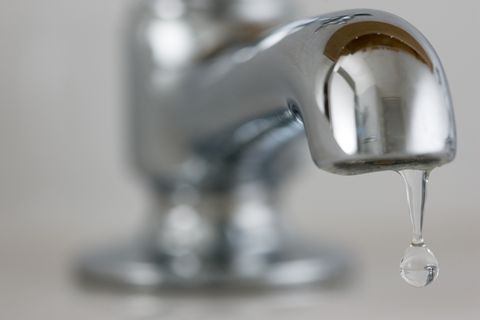
Peeing is one of those bodily functions you tend to take for granted—you sit, you pee, you wipe, you go.
That is, until the pee just refuses to come. Take those pesky (but important!) urine samples at the doctor. You don’t typically go to an appointment with a full bladder, prepared to dole out samples. Cue: You, squatting over a toilet hoping the sound of the running faucet will help you eke out a few drops.
Forgive the infomercial-esque tone, but there’s got to be a better way to make yourself pee, right?
Hypothetically speaking, why might I not be able to pee?
For starters, you shouldn’t stress if you tend to get a little pee-shy when you have to give a urine sample at the doctor’s office—it can be really tough to go on cue, especially if you’re not dealing with a full bladder.
But, if you regularly hold it in, you can also train your bladder not to work the way it should—and cause peeing issues in the process, says Mehran Movassaghi, M.D., a urologist at Providence Saint John’s Health Center in Santa Monica, Calif.
He often sees this with young women, who will hold their pee in during social situations, then, when they actually decide they’re ready to go, they can’t. “They end up training their bladder to hold on too much,” he says.
This happens over time, of course—if you hold it in during an especially long meeting once, it’s unlikely this will happen to you—but if you repeatedly don’t pee when your bladder tells you it’s time, you can actually screw up the muscles in your pelvic floor that help let pee out, says Movassaghi. “If you don’t relax your pelvic floor, you can’t go,” he says.
Constipation can also be an issue: When your rectum is packed with poop, it can actually serve as a barrier that pushes against your bladder so you can’t empty it like you normally would, says Movassaghi. That can make you feel like you have to go, but not be able to get it out.
There’s also a little condition called paruresis (a.k.a. “shy bladder”), which is when you have trouble peeing when you’re around other people–say, in a crowded bathroom.
This is actually a social phobia, according to the most recent version of the Diagnostic and Statistical Manual of Mental Disorders. People with paruresis tend to try to use the bathroom as much as possible at home and will restrict how much they drink when they’re out and even try to avoid social situation so they don’t have to try to pee in public, according to the International Paruresis Association (IPA).
There are actually a few ways you can help yourself pee.
Staying well hydrated is clearly the most important thing here, says Movassaghi. That means making sure you’re taking in about 2.7 liters (11.5 cups) of fluid a day (and that includes fluids from things you eat and non-water drinks like coffee), according to The National Academies of Sciences, Engineering, and Medicine.
If you’re good on the hydration front and you’re just having some performance anxiety, you can run water or flush the toilet to help drown out noises, says Movassaghi.
There’s also something called the breath-hold technique: When you’re sitting on the toilet, start by breathing normally, and then exhale about 75 percent of your breath, per the IPA. Then, hold your breath. After about 45 seconds, you should feel your pelvic floor drop and pee will start coming out. If that doesn’t work, any relaxation technique that works for you might do the trick, says Movassaghi.
If you’re still having issues peeing, it’s time to see a doctor. That’s especially true if you tend to go eight hours without peeing and feel like you’ve been drinking normally or you feel like you have to go all the time and nothing comes out, says Movassaghi.
While your inability to pee is likely due to something less severe, in rare cases it can be a sign of a neurologic disorder like multiple sclerosis, he says. Either way, you want to get it checked out so you can pee normally again ASAP.
Source: Read Full Article